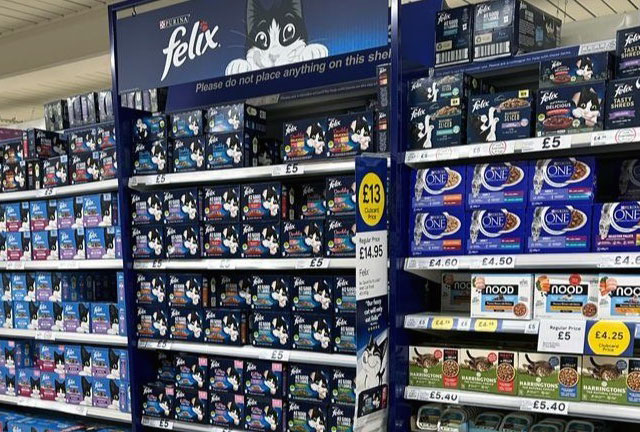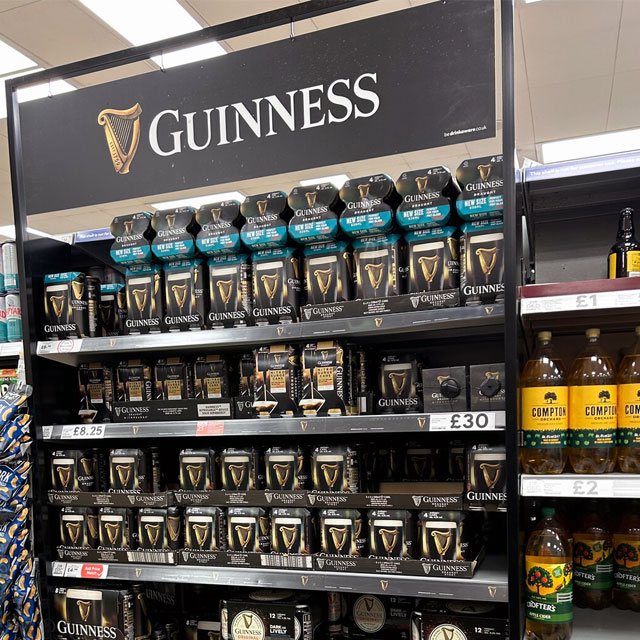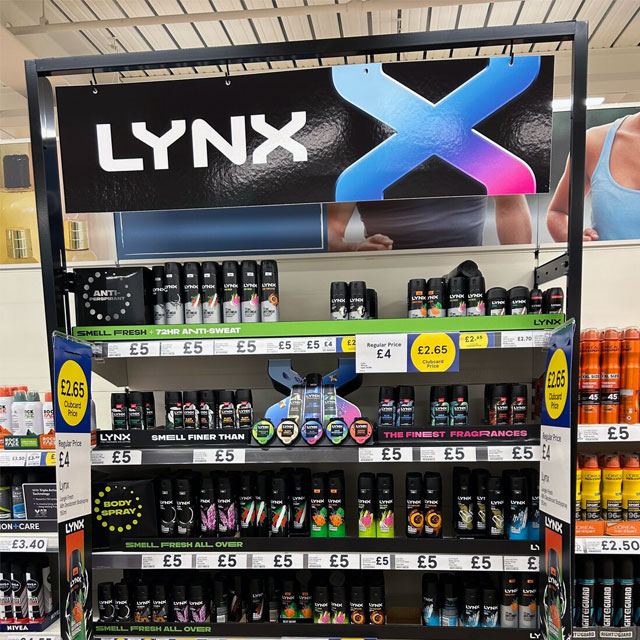
Is Brand Blocking killing Category Management?
Category Management—the idea that suppliers and retailers could grow together by focusing on category growth—has shaped the consumer goods industry for decades. But in the Retail Media age, brand blocks are springing up in defiance of shopper decision trees. Is this the end of Category Management as we know it?
Brand Blocks Aren’t Killing Category Management—They’re Just Exposing Its Reality
To all you category experts and aficionados – You know when you see this new wave of brand-block aisles—where one big brand takes over a whole bay—and feel your category-loving heart sink? I hear you. I really do. It feels just plain wrong, right? Because we’ve been trained to believe that shoppers don’t want this, that category growth is the magic bullet that aligns brand and retailer strategies, and the shopper decision tree is sacrosanct.
Unfortunately, none of this is definitively true. There is truth in there, but it does need a little interpretation. But before we go any further, let’s be clear. This isn’t new
Category Management Was Never That Pure
Category management Suppliers and retailers working hand-in-hand, building category growth together, always aligning shopper-centric decisions with mutual business goals. Sounds a little too good to be true. Right?
Retailers have always viewed shelf space as a revenue-generating asset— Globally brands have been paying for space for decades – a practice that pre-dates category management. Gondola ends? Paid for space. Listing fees? Paying for space. Brands paid for space; retailers placed those who paid most. So, this really isn’t new.
And brand teams know this. They have strategies that don’t grow categories, they present them every day of the week. Ask any buyer how many of the presentations they see have a genuine, strong, value proposition. You might be surprised (or shocked) by the answer.
Category Growth isn’t the (Only) Goal
There is a sense that category strategy experts have sold the idea too well. That a category growth story is like a magic bullet. That hardened retail buyers will turn into lovable puppies and roll on the ground waiting for a tummy tickle when presented with a shopper decision tree. “Hardened retail buyers will turn into lovable puppies and roll on the ground waiting for a tummy tickle when presented with a shopper decision tree” They don’t. Partly because they are trained to negotiate. And partly because category growth is important. But it isn’t the end goal for a retailer.
Retailers are thinking total revenue, total profit. While an individual buyer is thinking categories, senior retailers are looking at total baskets, or total stores. A retailer launches a fresh ready meal, knowing that it will hit their frozen food category. But that’s OK – because it brings shoppers in, improves revenue and total profit.
Brand Blocks are just the latest step
Today’s brand block is just a more blatant version of that old model—retailers monetizing the shelf. Not just selling soap powder, they are selling shoppers as an audience. And if category health isn’t visibly collapsing? The math is simple.
Retail media isn’t a fad—it’s a tsunami. Retail media spend grew to over $150 billion in 2024, with razor-thin internal costs and hefty margins on placement and clicks. selling floor real estate, endcaps, even whole bays to the highest bidder is just business. Brand blocking isn’t negligence—it’s strategy.
But of course, there is the shopper. Right?
Brand Blocks versus Category Management – What about the shopper?
If brand blocks don’t work for the shopper, won’t that reduce traffic? Isn’t that harmful? Don’t retailers want to sell stuff anymore? Of course. Retailers still want to grow categories. And category profit. They want their cake and eat it. Why wouldn’t they?
Is a brand block always detrimental to category growth? Is blocking inherently anti-category? Not always.
Is this Guinness execution destroying value or encouraging shoppers to buy an additional type of beer?

Could it be argued that this Lynx display is encouraging shoppers who only buy body spray to buy a range of personal care products?

The problem with Shopper Decision Trees – Shoppers don’t shop like that
As I argued in this article, the idea that the ‘best’ way to merchandise a category is by the shopper decision tree – that is flawed.
Shoppers aren’t always deciding. Often, they are finding. Let’s take the oral care category. A shopper decision tree might suggest that a needs-based segmentation and layout is best. Category Specialists might merchandise all the whitening together, sensitive next, etc. But is that how people really shop? Not in my experience.
Last time I looked at any data for this category, most shoppers were either looking for a deal or looking to buy their preferred brand (and many were looking for both). Little yellow labels help the former group navigate the shelf, and brand-blocking helps the latter. For a shopper who is looking to buy their regular Colgate variant, splitting Colgate up across the aisle in twelve different places just makes it harder.
Brand blocks might have a negative impact on the category (or maybe not)
And does that grow the category? Maybe not directly. Maybe an opportunity to trade me up has been missed. The shopper who was looking to find a whitening toothpaste might have been frustrated (or they might just have gone to their favourite brand and picked it up there). The category team at a manufacturer might feel that is a disaster, and indeed (as with any shelf layout) there are downsides to a brand block.
But from a retailer’s point of view? A shopper who finds what they want easily is a happy shopper. And happy shoppers tend to be more loyal than the one who was a little frustrated because it took them an age to find their regular brand.
Even the idea of Category Growth is Subjective
Because even the idea of ‘category growth’ is subjective. A brand team might think about growing the total category, nationwide. The retailer? Nope. They only care about their stores. And a happy shopper who comes back to the store will buy an entire shopping basket. That is worth a lot more than a 10% upsell on a tube of toothpaste that they buy once every two months.
I’m not saying brand blocking is always good, but the assumption that anything other than a shopper decision tree is flawed, or ‘anti-category’ is just wrong.
Category Management isn’t Dead – but it needs context
Suppliers can’t see category growth as a magic wand that trumps everything else. It’s part of the mix. Yes, if data shows that a brand block is killing the category, push back. But do bear in mind that category growth is not the ultimate goal for a retailer.
Category Management in the Age of Retail Media
1 Suppliers need to understand their retailers better. Category growth is important, but what else is? How well do we really understand the retailer’s needs and KPIs, and the relative importance of each? You can’t sell unless you understand your customer
2. Use shopper decision trees with care. They are an input to category strategy, not the strategy itself. If there is an opportunity to drive the category through discovery, there may be other strategies to achieve it. Discovery zones, media, promotions. Shelf-layouts are just one element in an overall shopper marketing mix – thinking of category management as separate to the rest of the shopper marketing mix limits the strategic options significantly.
3. Keep category thinking in the conversation. It is real. And it is a KPI. And buyers do care. But it’s not the only KPI. It’s not the most important one. And shoppers will continue to buy even if the layout isn’t perfect. Lead with data.
4. Keep talking shopper but keep it real. Shoppers are still the key. Whether the retailer is making money out of selling detergent or selling eye-balls, keeping shoppers happy is key. Lead with shopper understanding. But make sure it is real understanding, real insight, not just a slide provided by an agency. Shopper Decision Trees are not insight. They are analysis. Insight – that’s what you do with the analysis on the way to creating strategy.
Retail engagement and category management need a rethink in the age of Retail Media
As we move into the age of Retail Media suppliers need to change. Retail Media requires a rethink of media in total, not just trade spend. It requires a rethink of how suppliers work internally, through brand teams, media teams, shopper and category teams as well as customer managers. And it requires a revitalised, or re-imagined approach to Joint Business Planning and customer engagement.
Credits include:
Mike Anthony

Be the first to comment